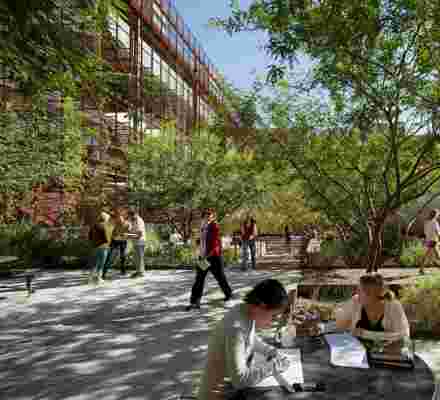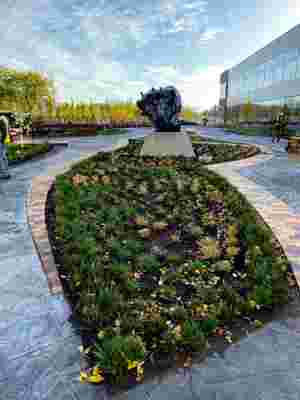In her 2009 book Rewilding the World: Dispatches From the Conservation Revolution , American author Caroline Fraser took an early look at what she believed would be the greatest, perhaps only, hope for saving the planet. Rewilding is a movement—part science, part design—that involves applying large-scale conservation and ecological restoration efforts to wilderness, ocean, and rural areas. It requires a broad look at designing and protecting such areas, and widespread buy-in; a shift in thinking from a per-project scale to a landscape one. Such a shift is, Fraser argued, the only way to adapt to climate change.
More than a decade later, the conversation around climate change has turned to one around climate crisis. Humans now have just 10 years to reduce their global carbon dioxide output in order to halt global warming; individual efforts are simply not enough. Although protected areas have grown from 3% of the world’s surface in the 1960s to over 12% today, experts worry many are no more than “paper parks”—in other words, areas that are protected in theory, but with few resources and little big-picture impact. Many aren’t nearly large enough to protect the wildlife that’s within them. Others are understaffed and undermonitored. While these problems exist in the U.S., they become even more apparent in certain areas abroad, like Africa, where conserved land is abundant, but parks so vast that it’s difficult to hire enough people to patrol and manage them—one reason poaching has been so hard to combat. In the Philippines, although there are more than 400 marine protected areas, only 10% of those are hitting the goals they’ve set for conservation.

Ten Eyck Landscape Architects’ Underwood Family Sonoran Landscape Laboratory created a classroom building on top of a parking lot in Tucson.
Which is why many in the design community have committed themselves to looking at land and sea conservation as a whole more than as the sum of its parts. Connecting wilderness areas both to one another and to the people who surround them is key. By creating corridors between isolated parks, national forests, and large roadless areas, projects like the Yellowstone to Yukon Conservation Initiative aim to create space for wildlife, enable migration, and reduce roadkill, recognizing that animals are a key component of design-based conservation efforts. In late 2018, Ken Yocom, chair of the department of landscape architecture at the University of Washington, published a study looking at the influence of beavers on three wetland projects in Seattle, and made recommendations for managing them adaptively, describing them as “nature’s landscape architects.”
The ultimate resource for design industry professionals, brought to you by the editors of Architectural Digest

“There are few other industries that understand the function of natural systems, the importance of fostering social interaction with them, and how to support all that,” says landscape architect Scott Bishop, the founding principal of Boston-based Bishop Land Design , professor of the practice in the Urban Landscape and Sustainable Urban Environments programs in the School of Architecture at Northeastern University, and member of the American Society of Landscape Architects (ASLA)’s Climate Action Committee, which was created in 2019 to examine how landscape architecture can solve the climate crisis. “As a landscape architect, I’ve realized I have to jump forward and ask what’s going to be critical in the next 100 years, and how do we need to adapt now to get us there?”

A revision of a civic plaza in Fargo, North Dakota, aimed to foster resident connectivity to the river by using a crackle motif that mimics the conditions found in native clay-based soils.
A big part of the answer, says Bishop, entails thinking about rural areas even when designing urban ones, both for the sake of creating more green space and for helping urban communities feel more closely connected to—and therefore accountable for—rural areas. “We have to ask ourselves, can we change a parking lot to a forest?” says Bishop. “Or, can we have a parking lot and a forest?” For a project in Grand Rapids, Michigan, Bishop and his team are working to connect people and ecology by creating a space along the Grand River that combines community activities, like pole fishing and a kayak launch, alongside efforts to mitigate flooding hazards through the incorporation of a planted flood berm. His firm’s revision of a civic plaza in Fargo, North Dakota, aims to foster resident connectivity to the river while also integrating stormwater management.
The ASLA’s D.C. headquarters, meanwhile, currently houses an exhibition of 20 case studies demonstrating how landscape architecture can help communities become more resilient to climate change, including a demonstration garden in Santa Barbara meant to educate homeowners about “ firewise ” landscaping and a wildlife bridge in West Vail Pass, Colorado, designed to reconnect wildlife populations fragmented by roadways.
The Stanford d.school and the Stanford Center for Ocean Solutions cocreated the Oceans x Design course in part to help support island states like Palau in their conservation efforts.
Similar design-minded efforts in ocean management and conservation include designing sustainable aquaculture, coastal protection and restoration efforts, and warning developers against the expansion of man-made infrastructure and paved surfaces along coastlines, which come at the cost of coastal ecosystems. Initiatives like the Ocean Foundation’s SeaGrass Grow project work to build carbon offsets and strengthen and restore coastline habitats in places like Puerto Rico, the Florida Keys, and Fiji by planting seagrass, tidal marshes, and mangroves. “We focus on blue infrastructure—thinking about how can we use the natural coastline as a barrier?” says the Ocean Foundation’s Jason Donofrio. “Mangroves, for instances, are incredible at dissipating wave energy, preventing coastal erosion, and offering natural protection. People everywhere from island nations to the islands of Manhattan need to think about how to be more resilient in the face of climate change. It’s not are storms going to get worse, but how much worse are they going to get, and what are we going to do about that?”
The Ocean Foundation’s Dr. Victor Rivera-Monroy measures the height of mangrove trees in order to track progress over time.
Innovation is happening at the learning level too. Last year, the Stanford d.school and the Stanford Center for Ocean Solutions cocreated the Oceans x Design course, in which students from multidisciplinary backgrounds use human-centered design approaches to identify new technologies for small-scale fisheries, and develop approaches and tools to support island states in their conservation efforts. “Design offers a way to look at problems through a more creative lens and to find new opportunities for solutions,” says d.school executive director Sarah Stein Greenberg. “How do you take human needs into account when considering conservation? That’s where design can, and must, come up with some unconventional, but very effective, solutions.”
